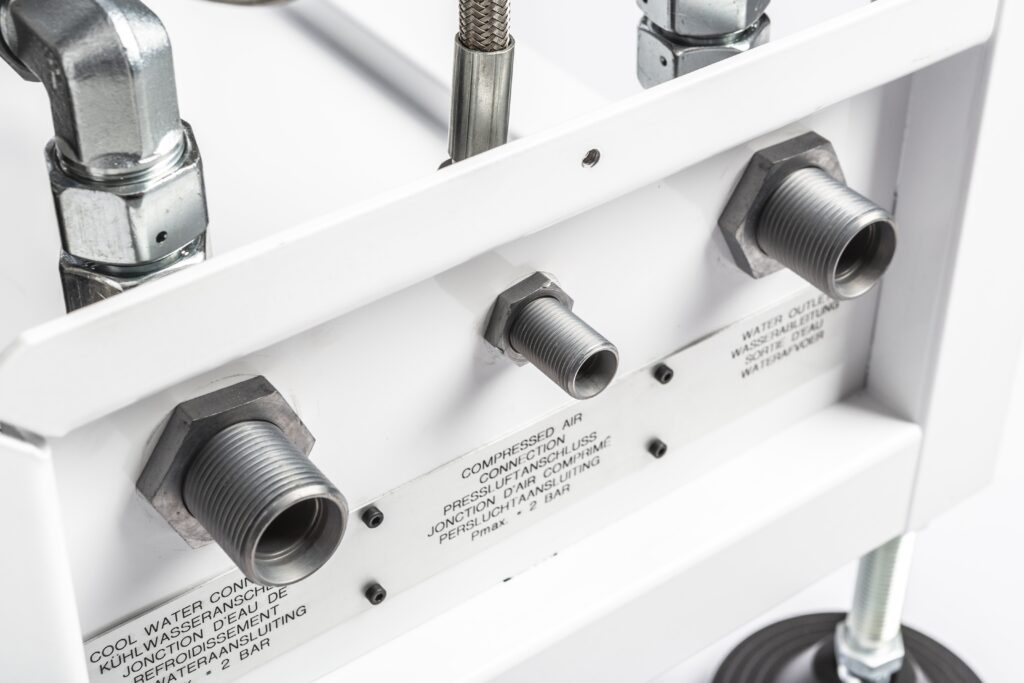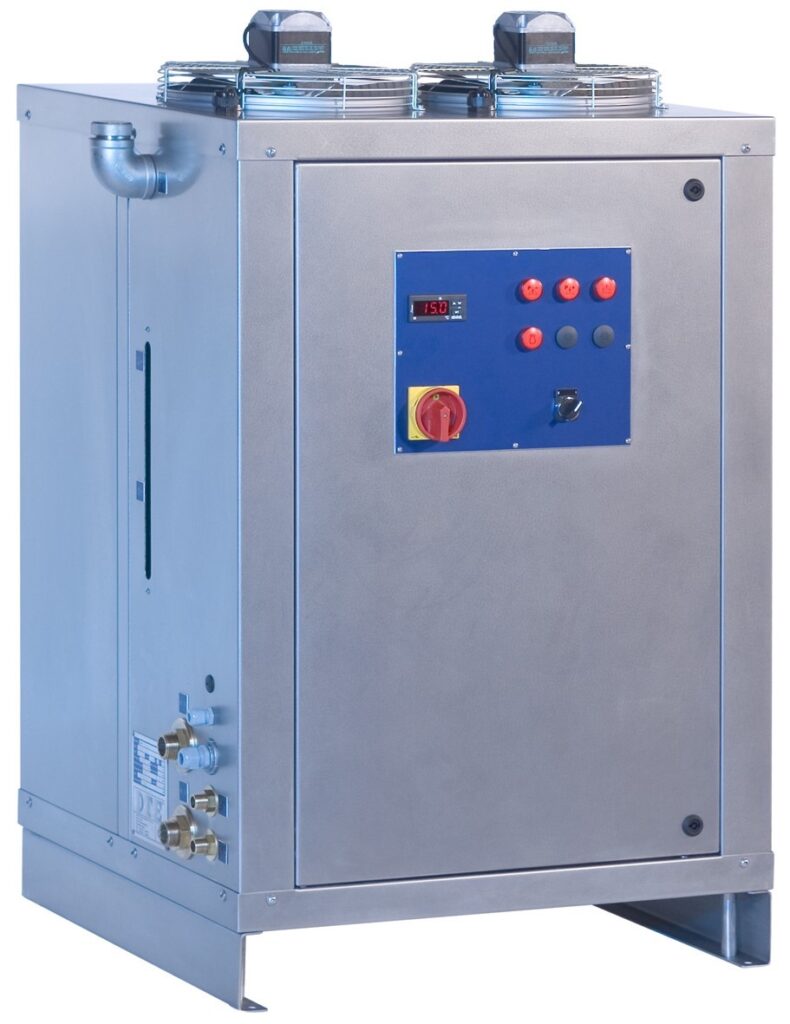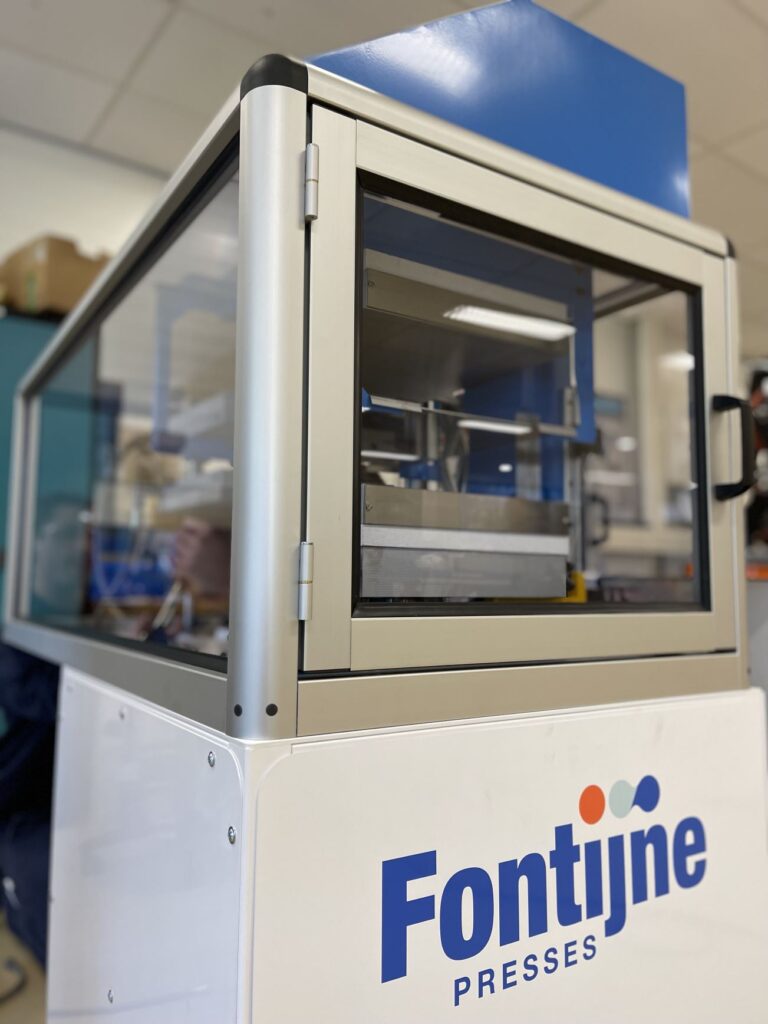When it comes to cooling and draining options for Fontijne Presses laboratory presses, researchers have several choices based on their specific requirements, available hardware, and desired performance levels. In this article, we will take a closer look at the available options and their pros and cons.
1. Process or drinking water cooling
This cooling method involves connecting the platen press to either the process water or drinking water supply. When the cooling cycle initiates, the magnetic valves open, allowing the heating platens to be cooled.
The control system regulates the cooling rate and temperature. The maximum cooling speed depends on the flow, pressure, and temperature of the cooling water.

Pros:
- Easiest and most straightforward way to cool the press with no additional hardware required.
- Lower initial costs compared to other cooling methods.
- Ramp cooling, which involves a straight-line cooling process, is possible under suitable conditions.
Cons:
- Performance and consistency are affected by changes in flow, pressure, and temperature of the cooling water, impacting the press’s efficiency.
- The use of drinking water results in wastage, as it needs to be drained after use.
- The outgoing temperature of the cooling water can be quite high, requiring additional measures to manage it effectively.
2. Chiller cooling
With the chiller cooling method, the platen press is connected to a chiller unit. During the cooling cycle, the magnetic valves open, and the heating platens start to cool down.
The control system manages the cooling rate and temperature, and the chiller automatically activates when the cooling water temperature requires it.
The maximum cooling speed can be calculated upon order.

Pros:
- Provides very consistent cooling, ensuring that press cycles are always conducted under the same conditions.
- Minimal influence from external parameters, maintaining a closed system.
- No warm wind flow or noise generated, especially when opting for an outside version of the chiller to avoid disturbances in the laboratory.
Cons:
- It requires additional space for the chiller unit.
- Higher energy consumption compared to other cooling methods.
3. Cassette cooling
The cassette cooling system is the ideal solution when extremely fast cooling is necessary due to specific process requirements or process speed. In this method, the press platens are continuously heated, while the cassette platens are continuously cooled. This process eliminates energy wastage caused by the hot/cold/hot process.
The cooling sequence involves opening the press, placing the sample in the middle, and using a transfer unit to exchange the heated platens with the cooled cassette platens.
Cooling starts immediately, achieving remarkably fast cooling speeds of up to 250 degrees Celsius per minute, depending on the conditions.

Pros:
- The fastest cooling method available, making quenching of samples possible.
- Extremely high efficiency, with no energy transfer from hot to cold platens.
Cons:
- Cooling is not actively controlled, as the platens are continuously cold.
- Cassette cooling might not be suitable for all applications due to its specific design and continuous cooling nature.
Conclusion
In conclusion, Fontijne Presses laboratory presses offer multiple cooling and draining options to cater to diverse research needs. Researchers can choose the most suitable method based on the desired cooling speed, energy efficiency, control requirements, and space limitations.
Whether it’s through process/drinking water cooling, chiller cooling, or the innovative cassette cooling system, Fontijne Presses ensures that the laboratory presses deliver optimal performance and reliability for various material testing and analysis applications.
